Panasonic WV-SFR531 Handleiding
Panasonic
Bewakingscamera
WV-SFR531
Bekijk gratis de handleiding van Panasonic WV-SFR531 (4 pagina’s), behorend tot de categorie Bewakingscamera. Deze gids werd als nuttig beoordeeld door 61 mensen en kreeg gemiddeld 3.5 sterren uit 31 reviews. Heb je een vraag over Panasonic WV-SFR531 of wil je andere gebruikers van dit product iets vragen? Stel een vraag
Pagina 1/4

WV-SFN531
WV-SFN531
(This illustration represents WV-SFN531.)
● This manual describes the installation procedures, network camera installation, cable connections,
and the angle of view adjustment.
● Before reading this manual, be sure to read the Important Information.
● This manual describes how to install the network camera using model WV-SFN531 as an example.
PGQX1909ZA es0615-0 Printed in China
Important Information ............................... 1 pc.
Installation Guide (this document) ............ 1 set
Warranty card ........................................... 1 set
CD-ROM*1 ................................................ 1 pc.
Code label*2 .............................................. 1 pc.
*1 The CD-ROM contains the operating instructions and different kinds of tool software programs.
*2 This label may be required for network management. The network administrator shall retain the
code label.
The following parts are used during installation procedures.
Ⓐ Attachment plate .................................. 1 pc.
ⒷBit (Hex wrench, screw
size 6.35 mm {1/4 inches} T10) ............... 1 pc.
Ⓒ
Template A (for the attachment plate)
...... 1 sheet
Ⓓ Power cord plug*3 ................................ 1 pc.
Ⓔ External I/O terminal plug*3 .................. 1 pc.
Ⓕ MONITOR OUT conversion plug ......... 1 pc.
Ⓖ Auxiliary handle ................................... 1 pc.
Azimuth adjustment ring
The component names of the camera are as follows. Refer to the illustration when installing or
adjusting the camera.
*2 Depending on the scanning application used, the Data Matrix may not be able to be read
correctly. In this case, access the site by directly entering the following URL.
http://security.panasonic.com/pss/security/support/qr_sp_select.html
Turn off each system’s power supply before making a connection. Before making connections,
prepare the required peripheral devices and cables.
Connect the output cable to the power cord plug (accessory).Ⓓ
Before starting the installation, check the entire system configuration. The following illustration
gives a wiring example of how to connect the camera to the network via a PoE device (hub).
<Required cable>
LAN cable (category 5e or better, straight)
Use a LAN cable (category 5e or better, cross) when directly connecting the camera to a PC.
*1 Recommended cable length from the speaker : less than 10 m {32.8 feet}
Recommended cable length from the microphone : less than 1 m {3.28 feet}
● Since the connector storage section
does not have a sufficient space, use
audio cables and a LAN cable that do
not exceed the sizes described in the
illustrations.
● Off, input, and output of the external I/O terminal 2 and 3 can be switched by con-
figuring the setting. Refer to the operating instructions on the provided CD-ROM for
further information about the EXT I/O terminal 2 and 3 (ALARM IN2, 3) settings
(“Off”, “Alarm input”, “Alarm output” or “AUX output”).
● Connect/disconnect the audio cables and turn on the power of the camera after turning
off the power of the audio output devices. Otherwise, loud noise may be heard from
the speaker.
● Make sure that the stereo mini plug is connected to this cable. When a monaural mini
plug is connected, audio may not be heard.
When connecting a monaural speaker with amplifier, use a locally procured conversion
cable (mono-stereo).
Connect a stereo mini plug (ø3.5 mm).
● Output impedance : Approx. 600 Ω (unbalanced)
● Recommended cable length : Less than 10 m {32.8 feet}
● Output level : –20 dBV
Connect a stereo mini plug (ø3.5 mm).
● Input impedance: Approx. 2 kΩ (unbalanced)
● Recommended cable length: Less than 1 m {3.28 feet} (for microphone input)
Less than 10 m {32.8 feet} (for line input)
● Recommended microphone: Plug-in power type (option)
● Supply voltage: 2.5 V ±0.5 V
● Recommended sensitivity of microphone: –48 dB ±3 dB (0 dB=1 V/Pa,1 kHz)
● Input level for the line input: Approx. –10 dBV
● Use all 4 pairs (8 pins) of the LAN cable.
● The maximum cable length is 100 m {328 feet}.
● Make sure that the PoE device in use is compliant with IEEE802.3af standard.
● When connecting both the 12 V DC power supply and the PoE device for power
supply, 12 V DC will be used for power supply.*
* If a 12 V DC power supply and a PoE hub or router are used at the same time,
network connections may not be possible. In this case, disable the PoE settings.
Refer to the operating instructions of the PoE hub or router in use.
* In the situation where a 12 V DC power supply and a PoE hub or router are used at
the same time and the 12 V DC power supply is then disconnected, the power
supply is stopped and the camera will restart.
● When the LAN cable is disconnected once, reconnect the cable after around
2 seconds. When the cable is quickly reconnected, the power may not be supplied
from the PoE device.
● Do not connect 2 wires or more directly to a terminal. When it is necessary to connect
2 or more wires, use a splitter.
● Install external devices so that they do not exceed the rating of the network camera.
● When using the EXT I/O terminals as the output terminals, ensure they do not
cause signal collision with external signals.
● The adjustment monitor is used for checking the adjustment of the angular field of
view when installing the camera or when servicing. It is not provided for recording/
monitoring use.
● Depending on the monitor, some characters (camera title, preset ID, etc.) may not
be displayed on the screen.
● Use a switching hub or a router which is compliant with 10BASE-T/100BASE-TX.
● If a PoE hub is not used, each network camera must be connected to a 12 V DC
power supply.
● When using 12 V DC, power supply from a PoE hub or router is not required.
* Use a LAN cable (category 5e or better, 8 pins, straight).
Connect the cables of external devices to the External I/O terminal plug (accessory).Ⓔ
q When connecting an external device, strip 8 mm - 9 mm {5/16 inches - 11/32 inches} of the
outer jacket of the cable and twist the cable core to prevent the short circuit first.
Specification of cable (wire): AWG20 - AWG26, Single core, twisted
w Push down the button of the desired terminal on the external I/O terminal plug with a ball-
point pen, and release the button when the cable of the external device is fully inserted
into the terminal hole.
● Check whether the stripped part of the wire is not exposed and is securely connected.
● ALARM IN1(DAY/NIGHT IN), ALARM IN2, ALARM IN3
Input specication : No-voltage make contact input (4 V - 5 V DC, internally pulled up)
OFF : Open or 4 V - 5 V DC
ON : Make contact with GND (required drive current: 1 mA or more)
● ALARM OUT, AUX OUT
Output specication
: Open collector output (maximum applied voltage: 20 V DC)
Open : 4 V - 5 V DC by internal pull-up
Close : Output voltage 1 V DC or less (maximum drive current: 50 mA)
* The default of EXT I/O terminals is “Off”.
● The 12 V DC power supply shall be insulated from the commercial AC power.
● Be sure to use the power cord plug (accessory) provided with this product.Ⓓ
● Be sure to fully insert the power cord plug (accessory) into the 12 V DC power Ⓓ
supply terminal. Otherwise, it may damage the camera or cause malfunction.
● When installing the camera, make sure that excessive force is not applied to the
power cable.
●
Be sure to use an AC adaptor compliant with the Specifications (written in the indication
label on the bottom side of this unit) regarding power source and power consumption.
● A READILY ACCESSIBLE DISCONNECT DEVICE SHALL BE INCORPORATED
TO THE EQUIPMENT POWERED BY 12 V DC POWER SUPPLY.
● ONLY CONNECT 12 V DC CLASS 2 POWER SUPPLY (UL 1310/CSA 223) or
LIMITED POWER SOURCE (IEC/EN/UL/CSA 60950-1).
q Loosen the screw of the power cord plug (accessory), strip 3 mm to 7 mm {1/8 inches to
9/32 inches} from the end of the wire, twist the stripped part of the wire sufficiently to avoid
short circuit, and then connect the output cable to the power cord plug (accessory).
w Tighten the screw of the power cord plug. (Recommended tightening torque: 0.34 N·m
{0.25 lbf·ft})
● Check whether the stripped part of the wire is not exposed and is securely connected.
●
When connecting an external power supply to the camera, use the AWG16 to AWG24
single-wired or stranded wired cables.
ⒹⒺ
4321
Ⓑ
(Hex wrench, screw
size 6.35 mm
{1/4 inches} T10)
For U.S. and Canada:
Panasonic System Communications
Company of North America,
Unit of Panasonic Corporation
of North America
www.panasonic.com/business/
For customer support, call 1.800.528.6747
Two Riverfront Plaza, Newark, NJ 07102-5490
Panasonic Canada Inc.
5770 Ambler Drive, Mississauga,
Ontario, L4W 2T3 Canada
(905)624-5010
www.panasonic.ca
For Europe and other countries:
Panasonic Corporation
http://www.panasonic.com
Panasonic System Networks Co., Ltd.
Fukuoka, Japan
Authorised Representative in EU:
Panasonic Testing Centre
Panasonic Marketing Europe GmbH
Winsbergring 15, 22525 Hamburg, Germany
*3 The external I/O terminal plug and power cord plug are attached to the camera.
4321
Ⓔ
● When the INITIAL SET button (i.e. the initializing button) is pressed (less than 1 second) to
switch the output signal of the MONITOR OUT terminal (NTSCPAL output), the MONITOR
OUT terminal can be switched for the NTSC monitor/PAL monitor.
●
When the camera is initialized, the settings including the network settings will be initialized.
Note that the CRT key (SSL encryption key) used for the HTTPS protocol will not be initialized.
● Before initializing the settings, it is recommended to write down the settings in advance.
● Do not turn off the power of the camera during the process of initialization. Otherwise, it
may fail to initialize and may cause malfunction.
● How to initialize the camera
Follow the steps below to initialize the network camera.
q
Turn off the power of the camera. When using a PoE hub, disconnect the LAN cable from the camera.
When using an external power supply, disconnect the power cable connector of the camera.
w
Turn on the power of the camera while holding down the INITIAL SET button, and keep the INITIAL SET button
held down till the SD MOUNT indicator is lit in green (more than 10 seconds). In about 2 minutes after releasing
the INITIAL SET button, the camera will start up and the settings including the network settings will be initialized.
INITIAL SET button (Initializing / NTSC PAL switch button)
● When an SD memory card is inserted and could Lights off → Blinks green →
be recognized Lights off
● When data can be saved after the SD memory card is Lights off → Lights green
inserted and the SD ON/OFF button is pressed
(less than 1 second)
● When data can be saved to the SD memory card Lights green
● When the SD memory card is removed after holding
Lights green → Blinks green →
down the SD ON/OFF button (about 2 seconds)
Lights off (recording)
Lights green → Lights off
(waiting for recording)
●
When data cannot be saved to the SD memory card because
Lights off
an abnormality was detected or the SD memory card is
configured not to be used
● Lighting/blinking LED can be turned off with the software settings at any time. (The initial
state is lighting or blinking.) Set the LED to be solid off if necessary, depending on the
installation conditions. (☞ Operating instructions included in the CD-ROM)
SD MOUNT indicator
q When the SD ON/OFF button is pressed (less than 1 second), the SD MOUNT indicator lights
up in green and data can be saved to the SD memory card*1.
w When the SD ON/OFF button is held down (about 2 seconds), the SD MOUNT indicator lights
off and the SD memory card can be removed.
SD ON/OFF button
●
When the camera is able to communicate with the connected device
Lights orange
LINK indicator
● When data is being sent via the network camera Blinks green (accessing)
ACT indicator
Powered speaker Adjustment monitor PoE device (hub)
LAN cable
(category 5e or better, straight)
PC
LAN cable (category
5e or better, straight)
LAN cable
(category 5e or better, straight)
Adjustment monitor
Recommended total extended
cable length*1
Microphone
Powered speaker
Microphone
● When AF (Auto Focus) operation is being executed Blinks red (1 time/second)
● When the set is being started Lights red
● When an SD memory card is recognized normally Lights red → Lights off
● When an abnormality is detected in the SD memory card Lights red → Stays red
or the SD memory card slot is not used after
the camera has started.
SD ERROR/AF indicator
WV-SFR531/WV-SFN531
WV-SFN531
*1 SDXC/SDHC/SD memory card
is described as SD memory
card.
Pan table fixing screw with washer
Auto focus (AF) button
● FRONT must positioned in
front of the camera (on the
Panasonic logo side).
MONITOR OUT
terminal (factory
shipment: NTSC
monitor)
Direction marker for installation (TOP ) Two-dimensional
barcode (Data
Matrix): To our
website*2
Screen display top (TOP)
SD memory card*1 slot
Direction marker for
installation (FRONT )
● Points up when installing to a wall.
Ⓓ Power cord
plug (accessory)
12 V DC power
supply terminal
Panning table
Enclosure Camera
Ⓐ Attachment plate
(accessory)
Ⓔ External I/O terminal plug (accessory)
Inner
cover
Dome cover
Camera xing screw
Tilting table
Ⓖ
Zoom knob
Auxiliary
handle
* Route the power cable as
shown in the following
illustration, and do not clip
the power cable when
mounting the enclosure.
● As necessary, use a
cable tie (locally
procured) to tie the
cables together.


ø25.4 mm
{1 inch}
ø73 mm
{2-7/8 inches}
FRONT
46 mm {1-13/16 inches}
83.5 mm
{3-9/32 inches}
The installation tasks are explained using 5 steps.
Preparations Fixing the attachment plate Mount the camera to the
attachment plate
Adjustment
There are 4 methods to install the camera to a ceiling or wall as described below. Prepare the
required parts for each installation method before starting the installation. The following are the
requirements for the various installation methods.
(1) Mount the camera on the two-gang junction box using
the attachment plate (accessory).Ⓐ M4 screws x 4 196 N {44 lbf}
(2) Directly mount the camera onto the ceiling or wall us-
ing the attachment plate (when wiring can be installed
in the ceiling or wall).
M4 screws x 4 196 N {44 lbf}
(3) Mount the camera in the ceiling using WV-Q174B ceil-
ing mount brackets (approx. 280 {0.62 lbs}).*g 1—
There is suf-
cient strength in
the ceiling
(4) When mounting the camera on an insufciently strong
ceiling using the WV-Q105A ceiling mount brackets
(approximately 150 {0.33 lbs})*g 1
anchor bolts x 2 *2
*1 For information on mounting the camera using (3) WV-Q174B or (4) WV-Q105A, refer to
the Instruction Manual provided with the (3) WV-Q174B or (4) WV-Q105A.
*2 Make sure that the installed ceiling can support more than 5 times of the weight of the
camera, the attachment plate and the anchor bolt.
● Procure 4 screws (M4) to secure the attachment plate (accessory) to a ceiling or a Ⓐ
wall.
● The minimum required pull-out capacity of a single screw or anchor bolt is 196 N
{44 lbf} or more when mounting with the installation method (1) and (2) above.
●
When mounting the camera on a concrete ceiling, use an AY plug bolt (M4) for securing.
(Recommended tightening torque: 1.6 N·m {1.18 lbf·ft})
● Select screws according to the material of the ceiling that the camera will be mounted
to. In this case, wood screws and nails should not be used.
● If a ceiling board such as plaster board is too weak to support the total weight, the
area shall be sufficiently reinforced.
Camera fixing screw
Attachment mounting
screws
Ⓐ Attachment plate
(accessory)
Do not remove the auxiliary wire.
SF R531
The enclosure is fixed only with enclosure
fixing screws. Please be careful about
the handling when you wish to remove.
SF N 531
The following are descriptions for when the camera with default settings is configured. If you are using fire-
wall software on your PC, the Setup Program may not be able to find any cameras on your network.
Configure the setting of the camera after temporarily invalidating the firewall software. Contact the network
administrator or your Internet service provider for information about configuring the settings of the network.
q Insert the provided CD-ROM into the CD-ROM drive of your PC.
w Click the [Run] button next to [IP Setting Software].
[Panasonic IP Setting] screen will be displayed. When a camera is found, information
about it, such as its MAC address and IP address, is displayed.
e Select the camera you want to congure, and click [Access Camera].
● Depending on the adjustable range or the optical zoom, it must be noted that the
shadow of the enclosure may be projected.
● When mounting the camera on a ceiling, adjust the tilt angle so that the TOP mark
above the lens always comes to the top side.
● When mounting the camera on a wall, rotate the pan table by 180° to the left and
rotate the tilt table till the TOP mark above the lens always comes to the top side.
● When adjusting the viewing angle for camera mounted to ceilings, the enclosure and
installation auxiliary wire may be displayed on the screen depending on the direction
the camera is facing. Move the enclosure and installation auxiliary wire so that they
are not displayed on the screen. SF R531
● Refer to “Using the CD-ROM” in the operating instructions on the provided
CD-ROM for further information about CDLauncher.
● When no image is displayed on the “Live” page, refer to the Troubleshooting in
the operating instructions on the provided CD-ROM.
● It is possible to enhance the network security by encrypting the access to camer-
as using the HTTPS function. Refer to the operating instructions on the provided
CD-ROM for how to configure the HTTPS settings.
● Click the [Setup] button on the “Live” page, the user authentication window will be
displayed. Enter the default user name and password as follows, and log in.
User name: admin
Password: 12345
● When changing settings related to the network settings, such as connection
mode, IP address, and subnet mask, click the [Network Settings] button in
[Panasonic IP Setting] screen as shown in step
e, then change each setting.
● Due to security enhancements in “IP Setting Software”, “Network settings” of the
camera to be configured cannot be changed when around 20 minutes have
passed after turning on the power of the camera. (When the effective period is set
to “20 min” in the “Easy IP Setup accommodate period”.)
However, settings can be changed after 20 minutes for cameras in the initial set
mode.
● “Network Camera Recorder with Viewer Software Lite” which supports live moni-
toring and recording images from multiple cameras is available. For further infor-
mation, refer to our website
(http://security.panasonic.com/pss/security/support/info.html).
● When cameras are displayed in [Panasonic IP Setting] screen, click the cam-
era with same MAC address as the MAC address printed on the camera that
you want to configure.
● Press the PUSH mark, release the four tabs of
the inner cover from the tilt table, and remove the
inner cover.
●
Securely tighten all the enclosure fixing screws (x2) of enclosure. Otherwise, the enclosure
dropping may result in injury. (Recommended tightening torque: 0.59 N·m {0.44 lbf·ft})
● After complete installation, remove the cover film from the dome cover.
● Defocus may be caused by the reinstalled enclosure. In this case, perform the auto
focus function from the setup menu.
r If the installation screen of the viewer software “Network Camera View 4S” is displayed,
follow the instructions of the wizard to start the installation. (The viewer software is in-
stalled from the camera.)
● The License Agreement will be displayed. Read the Agreement and choose “I accept
the term in the license agreement”, and click [OK].
● The launcher window will be displayed. If the launcher window is not displayed, double
click the “CDLauncher.exe” le on the CD-ROM.
● The “Live” page will be displayed.
●
If you cannot install the viewer software “Network Camera View 4S” or if images are not
displayed, click the [Install] button next to [Viewer Software] on the launcher window to
install the software.
● Perform the [Time & date] settings in the “Setup” - “Basic” page before using the camera.
Congure the network
settings
ⒶAttachment plate (accessory)
Fixing screws for
attachment plate: p2-x4
(M4, locally procured)
●
Align the FRONT direction (the direction of FRONT marker on the camera that indicates the
installation direction when installing the camera) of © template A (accessory) with the desired
direction, and drill through a 25.4 mm {1 inch} diameter hole.
●
If you want to be able to change the direction of the camera, drill through a 73 mm {2-7/8 inches} diameter
hole in the center. By doing so you can adjust the mounting direction of the camera in 90° increments.
Ⓕ MONITOR OUT conversion
plug (accessory)
● To remove the SD memory card, hold down
the SD ON/OFF button (about 2 seconds).
When the ashing SD MOUNT indicator goes
out, you can remove the SD memory card.
● After the SD memory card has been replaced,
press the SD ON/OFF button (less than 1
second), and make sure the SD MOUNT
indicator is continually lit.
● If you do not press the SD ON/OFF button
after replacing the SD memory card, the
SD MOUNT indicator is automatically lit
approximately 5 minutes later.
46 mm {1-13/16 inches} 83.5 mm {3-9/32 inches}
Two-gang junction box
ⒶAttachment plate (accessory)
Fixing screws for attachment plate: x4 (M4, locally procured)
Azimuth adjustment ring Zoom knob
q
Loosen 2 enclosure xing screws
of the enclosure with the Ⓑ bit (Hex
wrench, screw size 6.35 mm {1/4
inches} T10) (accessory), and remove
the enclosure from the camera.
w Remove the power cord plug Ⓓ
(accessory) and the external I/O Ⓔ
terminal plug (accessory) attached to
the camera.
e Connect cables to the camera according to
the instructions in “Making connections”, and
temporarily x the camera by inserting and
rotating attachment mounting screws into the
holes of the attachment plate (accessory).Ⓐ
● Be sure to tighten the camera fixing screw.
Failure to observe this may cause camera trouble
due to camera falling. (Recommended tightening
torque: 0.78 N·m {0.58 lbf·ft})
r Secure the camera by tightening the camera xing screws. mark on the camera lens head facing
the front (i.e. the direction of FRONT
mark on the camera).
y Press the PUSH mark on both sides of
the inner cover at the same time, and
remove the inner cover as shown in
the following illustration.
t Loosen the cross-head side of tilt table xing screw (on
one side), and incline the tilt table while keeping the TOP
● After cables have been connected to the camera, align the
OPEN mark of the camera side panel with the tab of the
attachment plate, insert 2 attachment mounting screws into the
attachment plate, and rotate the camera by approximately 15°.
The LOCK mark is moved to the tab position of the attachment
plate and the camera is temporarily secured.
* The fixing angle of the camera can be rotated in 90° increments.
Enclosure
Ⓑ Bit (accessory)
Ⓑ Bit
(accessory)
Enclosure fixing
screw (x2)
Cross-head side of
tilt table fixing screw
(opposite side of the
camera)
TOP mark
Press both sides
at the same time
Press
PUSH mark (x2)
Inner cover
Inner cover
Tilt table
Tab of the
inner cover
When installing the camera directly on the
ceiling or wall with cables exposed, or when
mounting the camera using the ceiling mount
bracket WV-Q174B (option), cut out a portion of
the dome cover to open a cable access hole.
●
● Disconnect either the 12 V DC power
source or PoE power source to prevent
power from being supplied during
mounting work.
● To prevent injuries and protect the
cables, finish the side cable access hole
with a file to avoid sharp edges.
Tab of the attach-
ment plate
Side cable access hole
q Turn on power for the camera by either connect-
ing a LAN cable or a 12 V DC power cable.
w
Connect the
Ⓕ
MONITOR OUT conversion plug
(accessory) to the MONITOR OUT terminal of the
camera, and then connect the monitor for adjust-
ment with a RCA pin cable (locally procured).
e Insert an SD memory card into the slot, if
necessary.
● Insert the SD memory card with its label
facing down.
● For information about performing the SD
memory card setting, refer to the operating
instructions (included in the CD-ROM).
●
r Loosen the pan table xing screw, and adjust
the angle of the camera with the tilt table, pan
table, and azimuth adjustment ring.
Horizontal (PAN) angle: +120° (Right) to
-240° (Left)
Vertical (TILT) angle: ±85°
Azimuth (YAW) angle: ±100°
t Tighten the cross-head side of tilt table xing
screw (on one side) and the pan table xing
screw, and x the camera.
(Recommended tightening torque:
0.59 N·m {0.44 lbf·ft})
y Adjust the zoom and focus.
1. Loosen the zoom knob equipped with
Ⓖ
auxiliary handle (accessory) by rotating
the knob to the left, and move it between
TELE and WIDE to obtain the appropriate
angle of view. Then, lock the zoom knob by
rotating it back to the right.
2. Adjust the focus by pressing the auto focus
(AF) button.
3. Adjust the screen size and focus by repeat-
ing steps 1 and 2. Readjust the angle of the
camera with the tilt table, pan table, and
azimuth adjustment ring if necessary.
u Press the PUSH mark on both sides of the
inner cover, and install the inner cover to the
place where it was removed.
i Disconnect the monitor for adjustment.
Attach the enclosure and secure it by tightening
the enclosure xing screws.
(Attach the enclosure by aligning the Panasonic
logo to the direction marker (FRONT ) on the
camera.)
PUSH mark (x2)
SD memory card (with
label facing down)
MONITOR OUT terminal
Enclosure
Auto focus (AF) button
TELE
WIDE
Vertical (TILT) angle
Tilting table
Horizontal (PAN)
angle
Azimuth (YAW)
angle
FRONT mark
Tab of the
inner cover
Pan table xing
screw (inside
this part)
Tilt table xing screw
Inner cover
Ⓖ Auxiliary handle (accessory)
Product specificaties
| Merk: | Panasonic |
| Categorie: | Bewakingscamera |
| Model: | WV-SFR531 |
| Kleur van het product: | Wit |
| Gewicht: | 700 g |
| Breedte: | 129.5 mm |
| Diepte: | 129.5 mm |
| Hoogte: | 102.5 mm |
| Soort: | IP-beveiligingscamera |
| Ondersteund audioformaat: | LC-AAC |
| Ondersteunde videoformaten: | H.264 |
| Stemcodecs: | G.711, G.726 |
| Vormfactor: | Dome |
| Automatisch scherpstellen: | Ja |
| Ondersteuning voor plaatsing: | Binnen & buiten |
| Connectiviteitstechnologie: | Bedraad |
| Ethernet LAN: | Ja |
| Montagewijze: | Plafond |
| Maximum resolutie: | 2048 x 1536 Pixels |
| Videocompressieformaten: | H.264 |
| Diameter: | 129.5 mm |
| Type stroombron: | Power over Ethernet (PoE) |
| Minimale belichting: | 0.0007 Lux |
| Aantal cameras: | 1 |
| Geïntegreerde geheugenkaartlezer: | Ja |
| Compatibele geheugenkaarten: | SD, SDHC, SDXC |
| Ingebouwde HDD: | Nee |
| Nachtvisie: | Ja |
| Zoomcapaciteit: | Ja |
| Brandpuntbereik: | 2.8 - 9.5 mm |
| Volledige HD: | Ja |
| Omvang optische sensor: | 1/3 " |
| Type beeldsensor: | MOS |
| Digitale zoom: | 4 x |
| Witbalans: | ATW, AWC |
| Ondersteunde grafische resoluties: | 160 x 120,160 x 90,320 x 180,320 x 240,400 x 300,640 x 360,640 x 480 (VGA),800 x 600 (SVGA),1280 x 720 (HD 720),1280 x 960,1600 x 1200 (UXGA),1920 x 1080 (HD 1080) |
| Ruisonderdrukking: | Ja |
| Bekabelingstechnologie: | 10/100Base-T(X) |
| Ondersteunt Windows: | Ja |
| Aantal gebruikers: | 14 gebruiker(s) |
| Effectieve sensorresolutie: | 2400000 Pixels |
| Veiligheidsfunties: | Schokbestendig |
| Maximaal 30 frames per seconde: | 60 fps |
| Progressive scan: | Ja |
| Ondersteunde talen: | CHI (SIMPL), CHI (TR), DEU, ENG, ESP, FRE, ITA, JPN, POR, RUS |
| Power over Ethernet (PoE): | Ja |
| Normal focusing bereik: | 0.3 - ∞ m |
| Aantal talen: | 9 |
| Bedrijfstemperatuur (T-T): | -10 - 50 °C |
| Relatieve vochtigheid in bedrijf (V-V): | 10 - 90 procent |
Heb je hulp nodig?
Als je hulp nodig hebt met Panasonic WV-SFR531 stel dan hieronder een vraag en andere gebruikers zullen je antwoorden
Handleiding Bewakingscamera Panasonic

8 April 2025
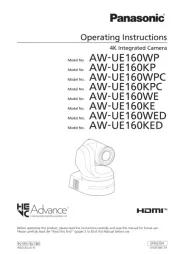
21 Februari 2025
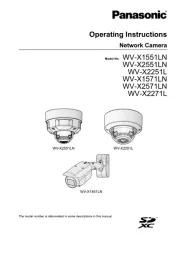
23 November 2024

27 Maart 2024

15 November 2023

4 Juli 2023

29 April 2023

28 April 2023

20 April 2023

7 April 2023
Handleiding Bewakingscamera
- Intellinet
- Aritech
- IMILAB
- British Telecom
- ClearView
- Elro
- Security Labs
- Withings
- TP Link
- Zebra
- Y-cam
- AVer
- JVC
- EverFocus
- Boyo
Nieuwste handleidingen voor Bewakingscamera
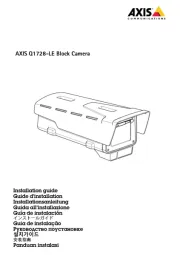
29 Juli 2025
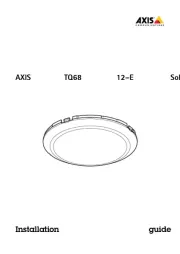
29 Juli 2025
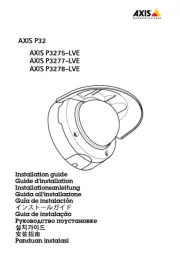
29 Juli 2025
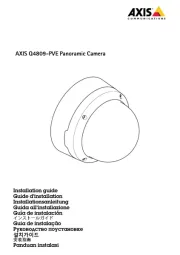
29 Juli 2025

29 Juli 2025
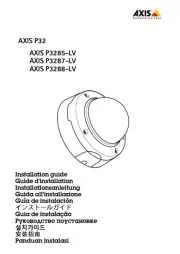
29 Juli 2025
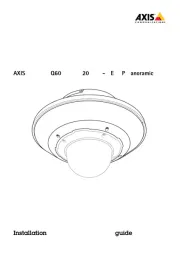
29 Juli 2025
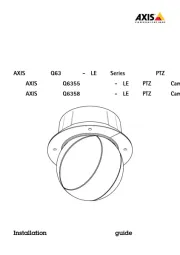
29 Juli 2025
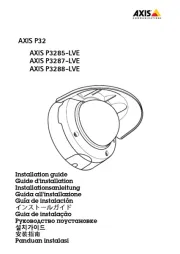
29 Juli 2025
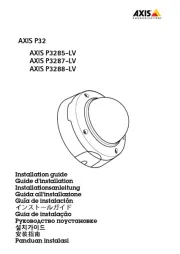
29 Juli 2025